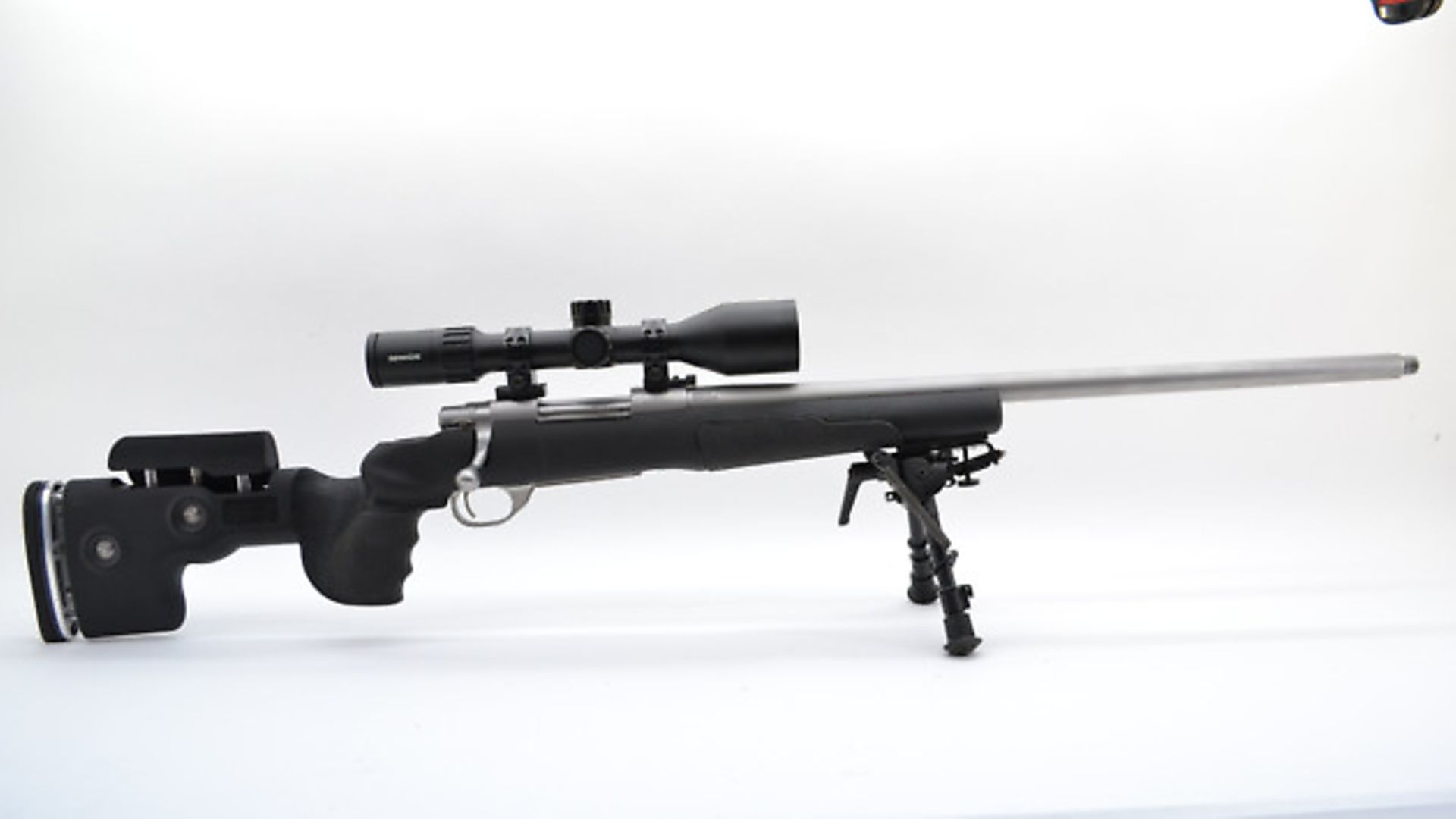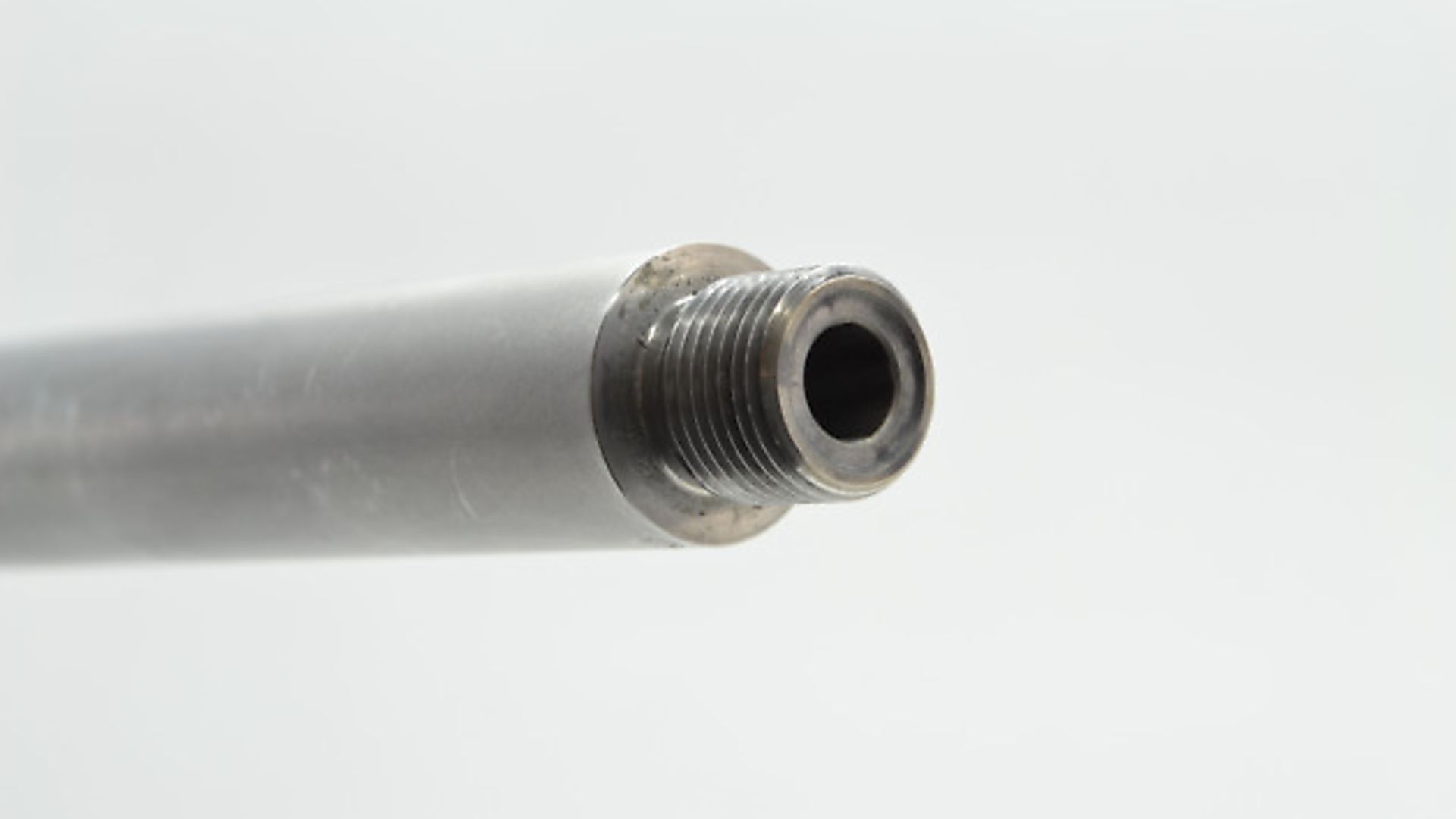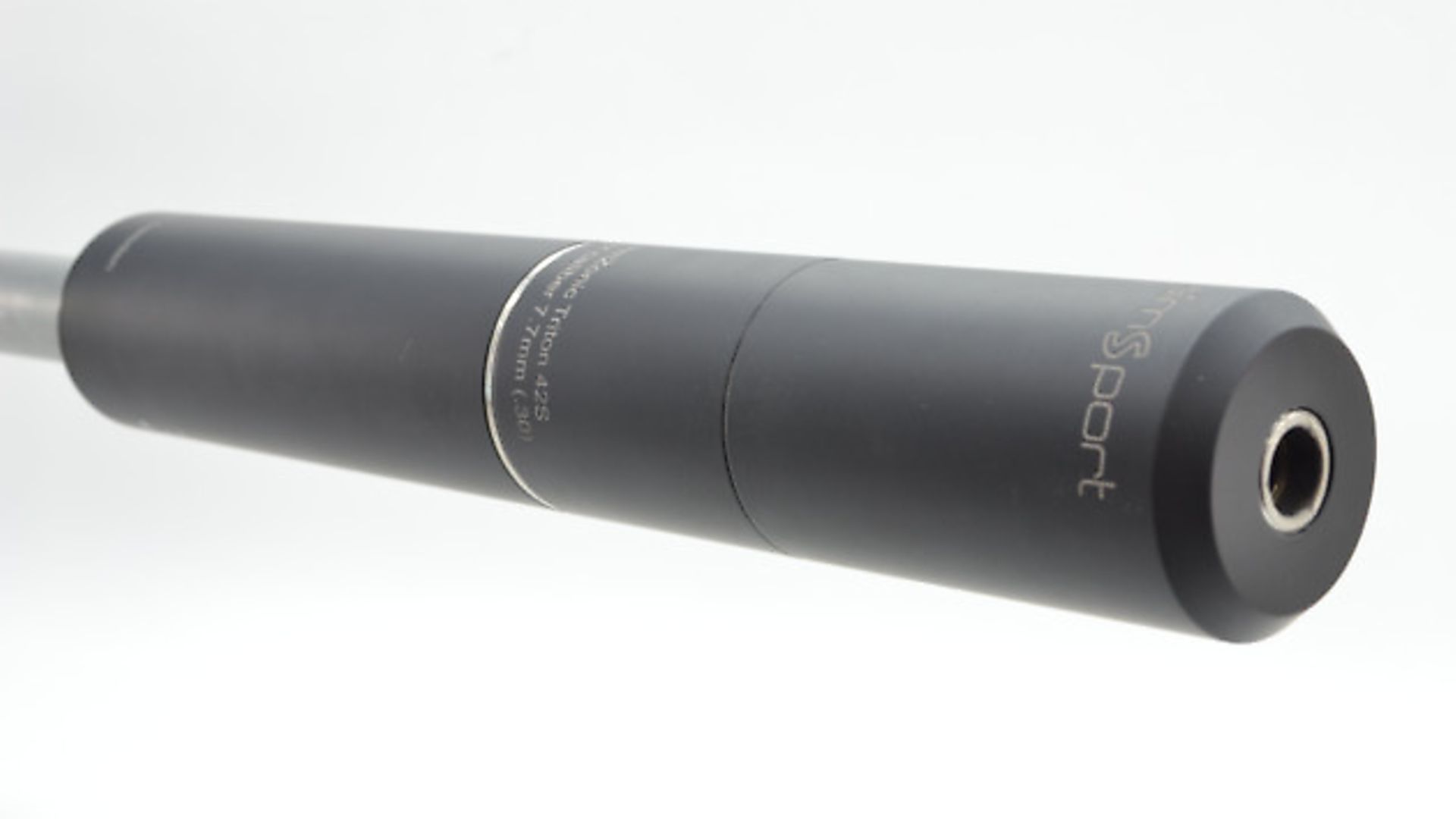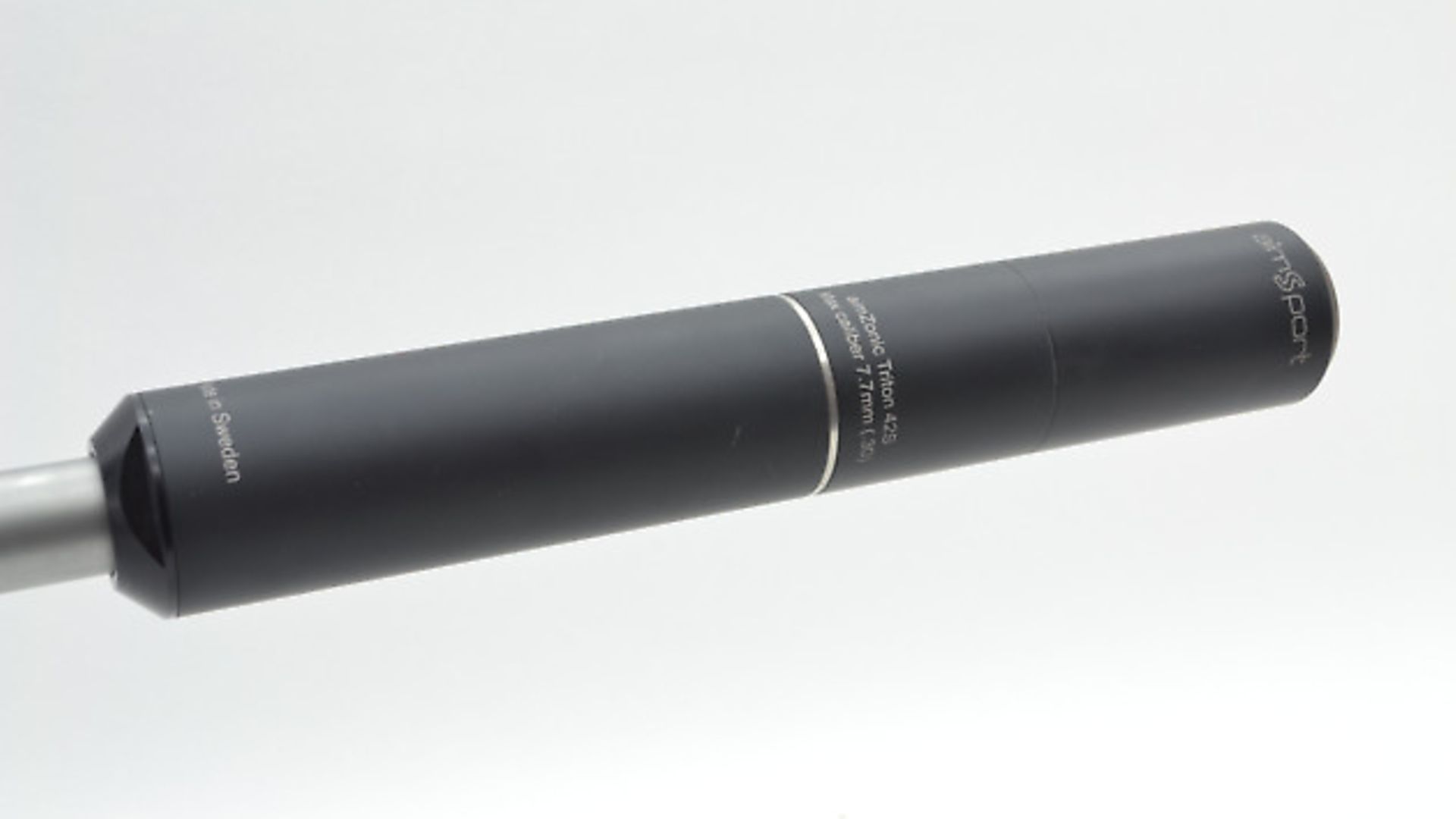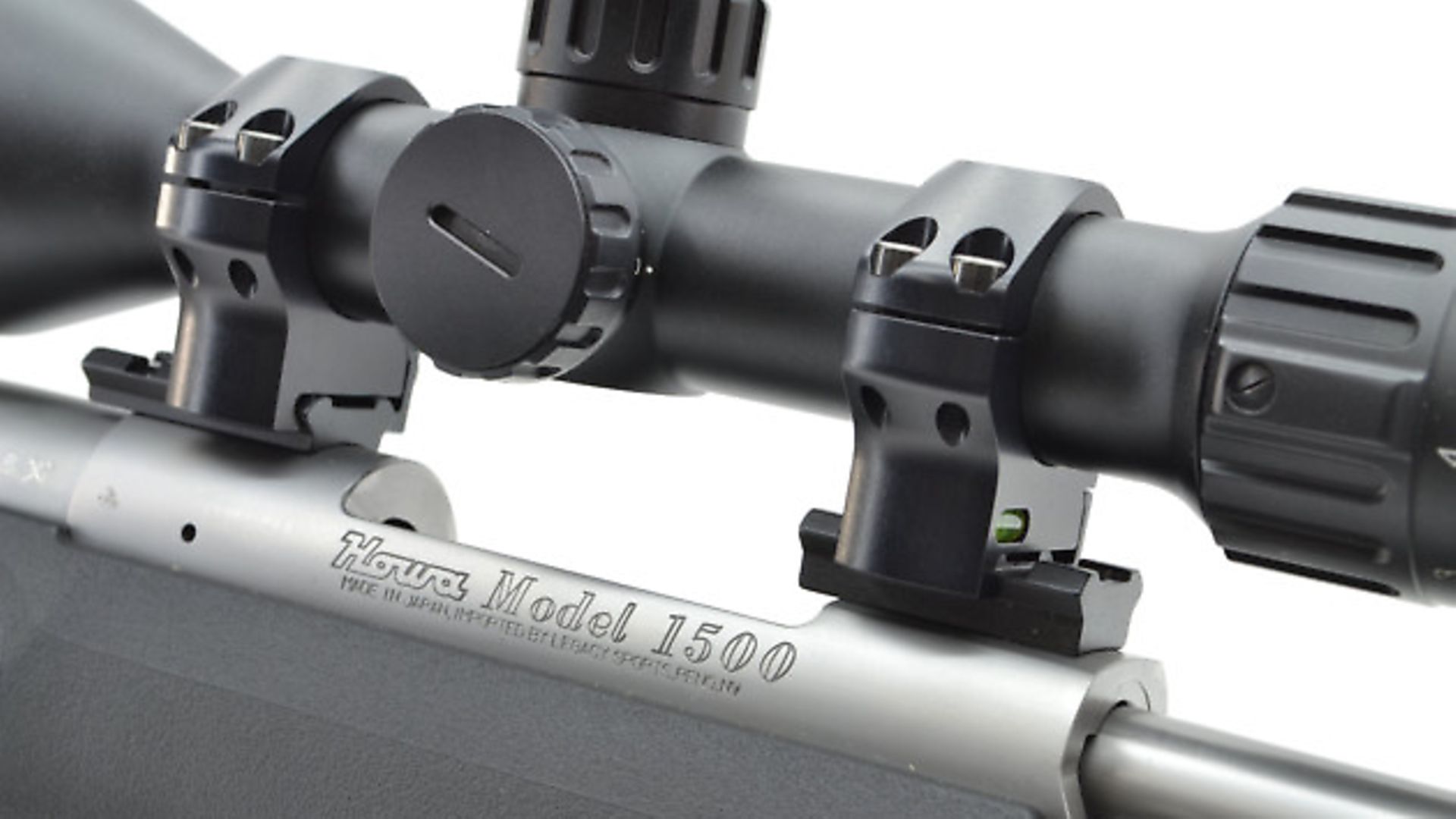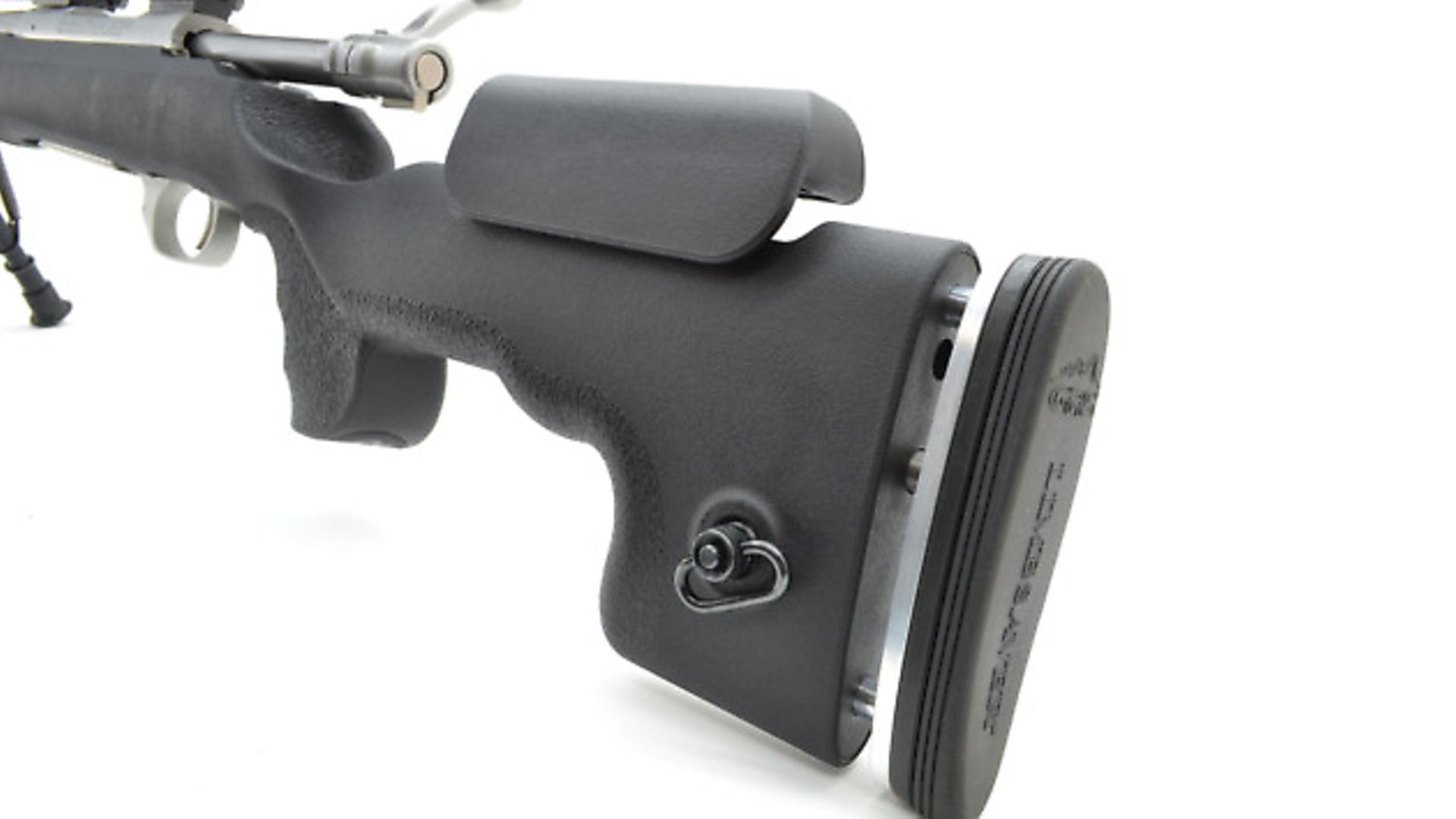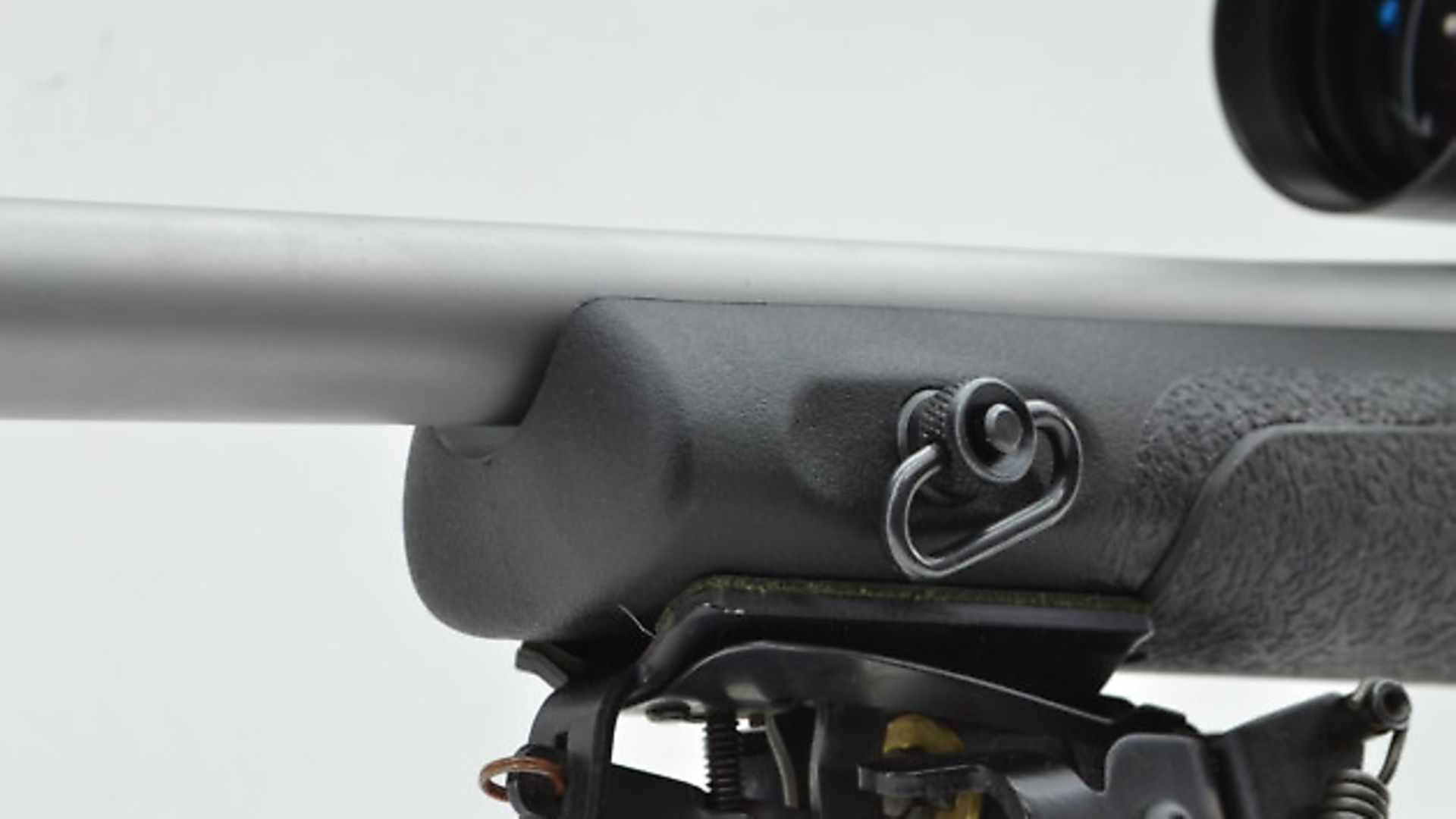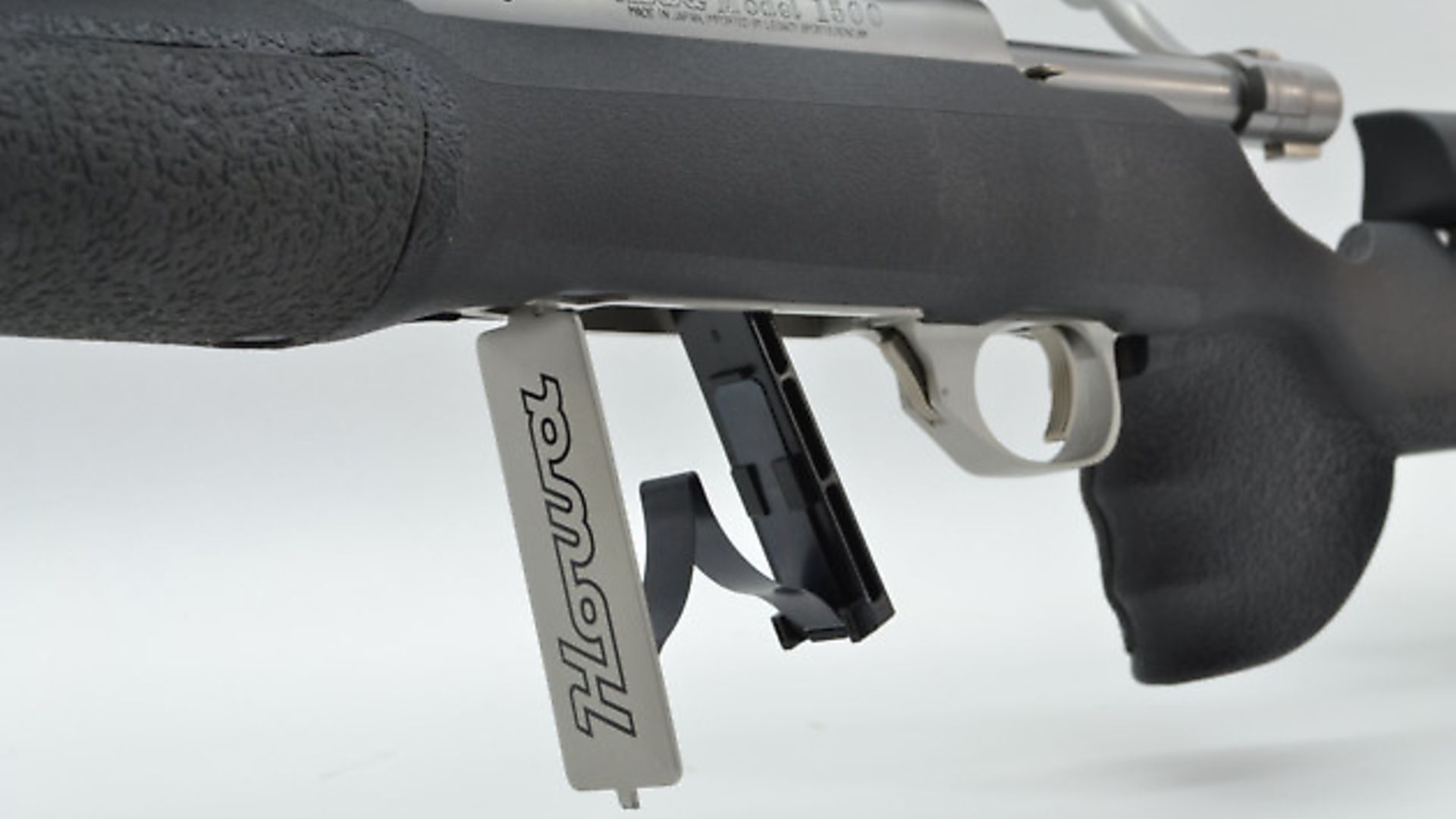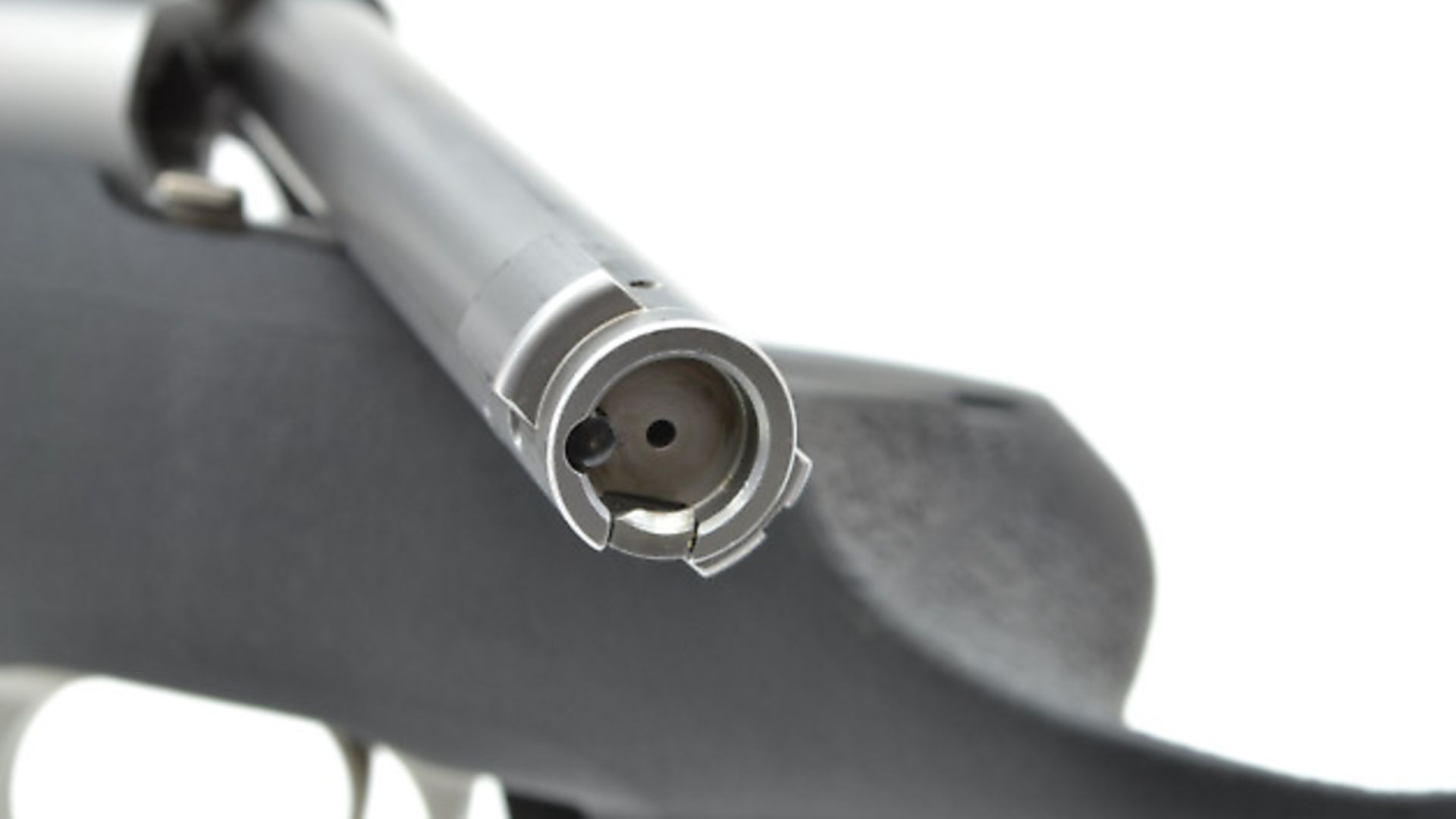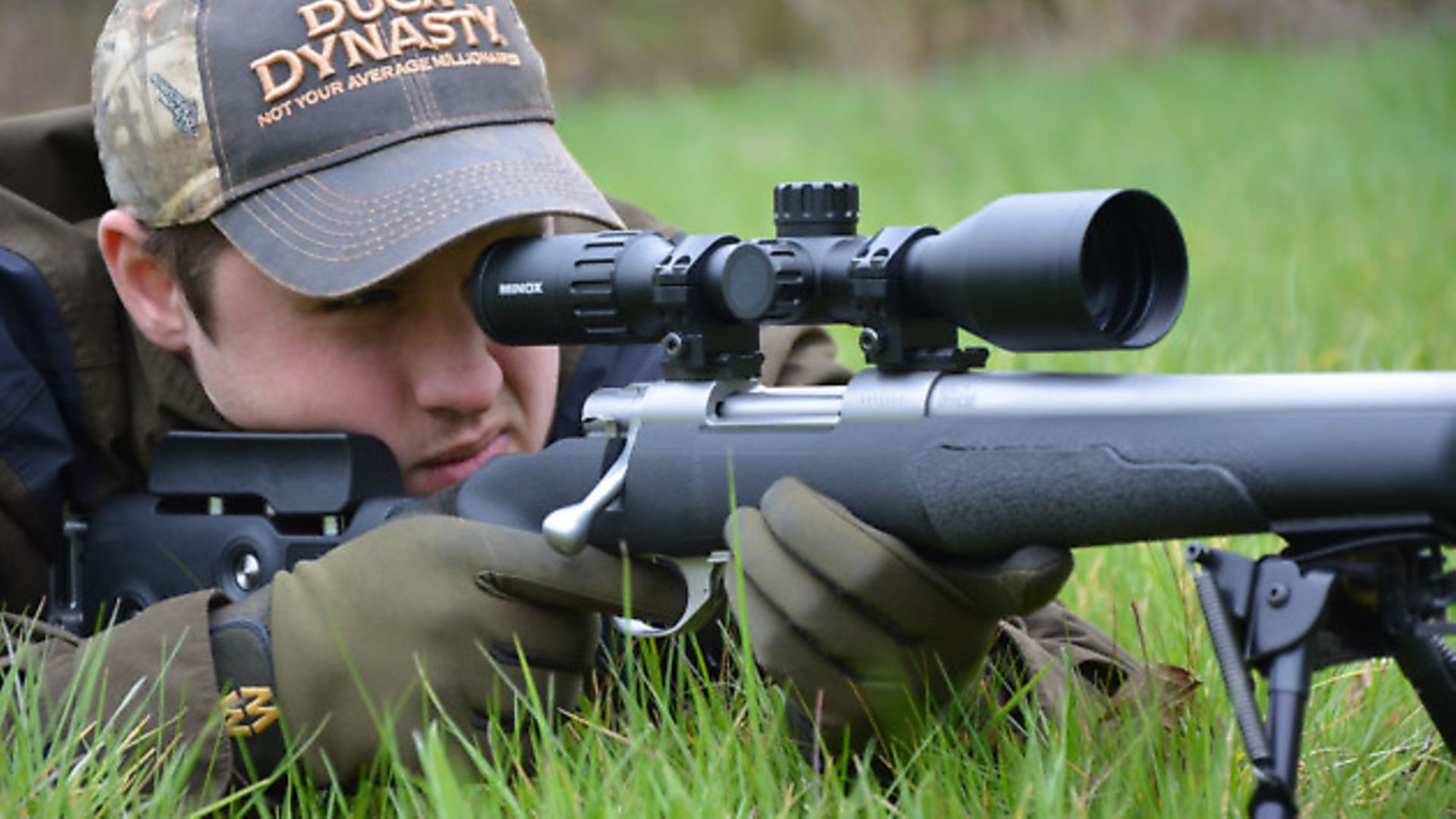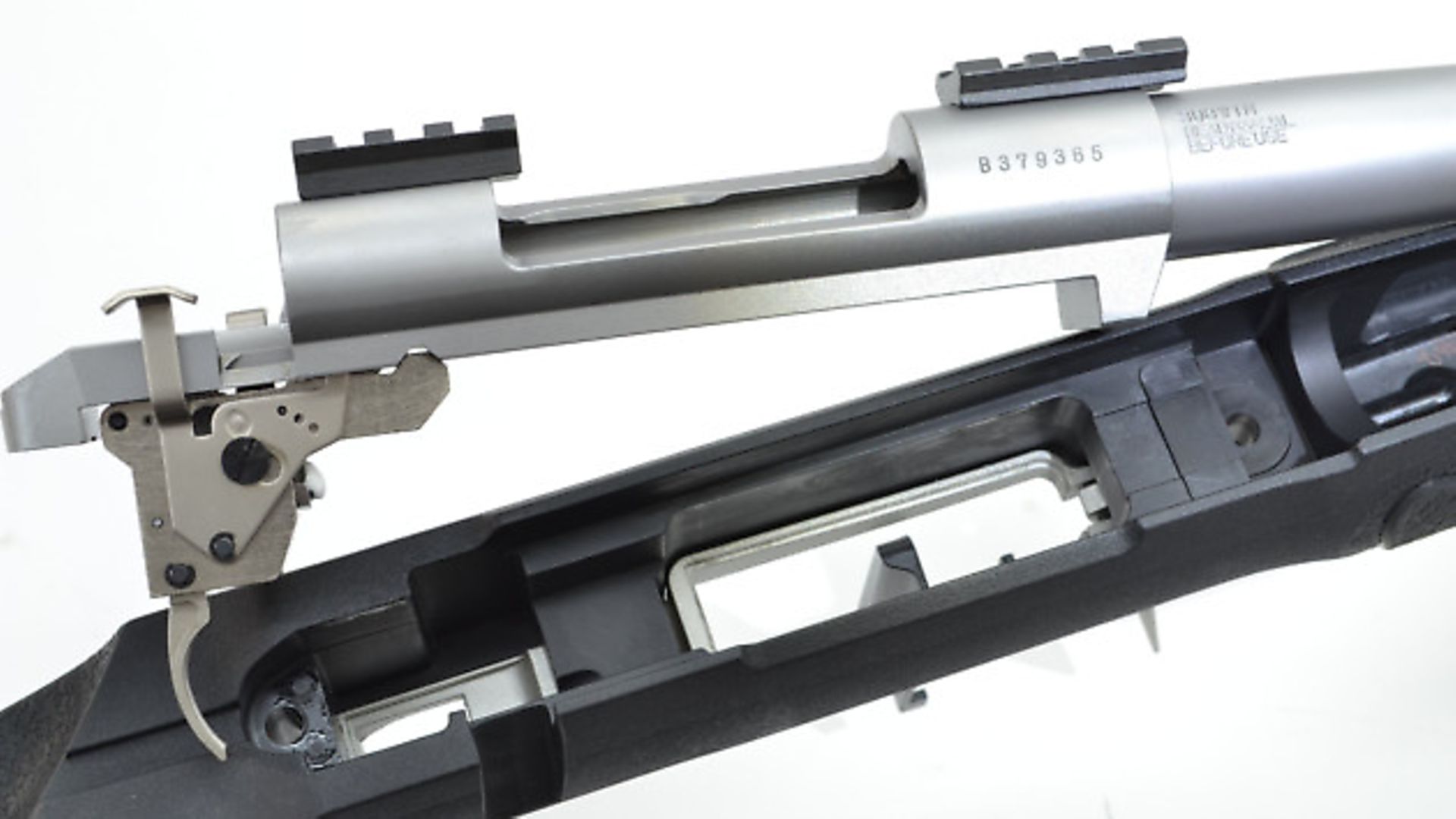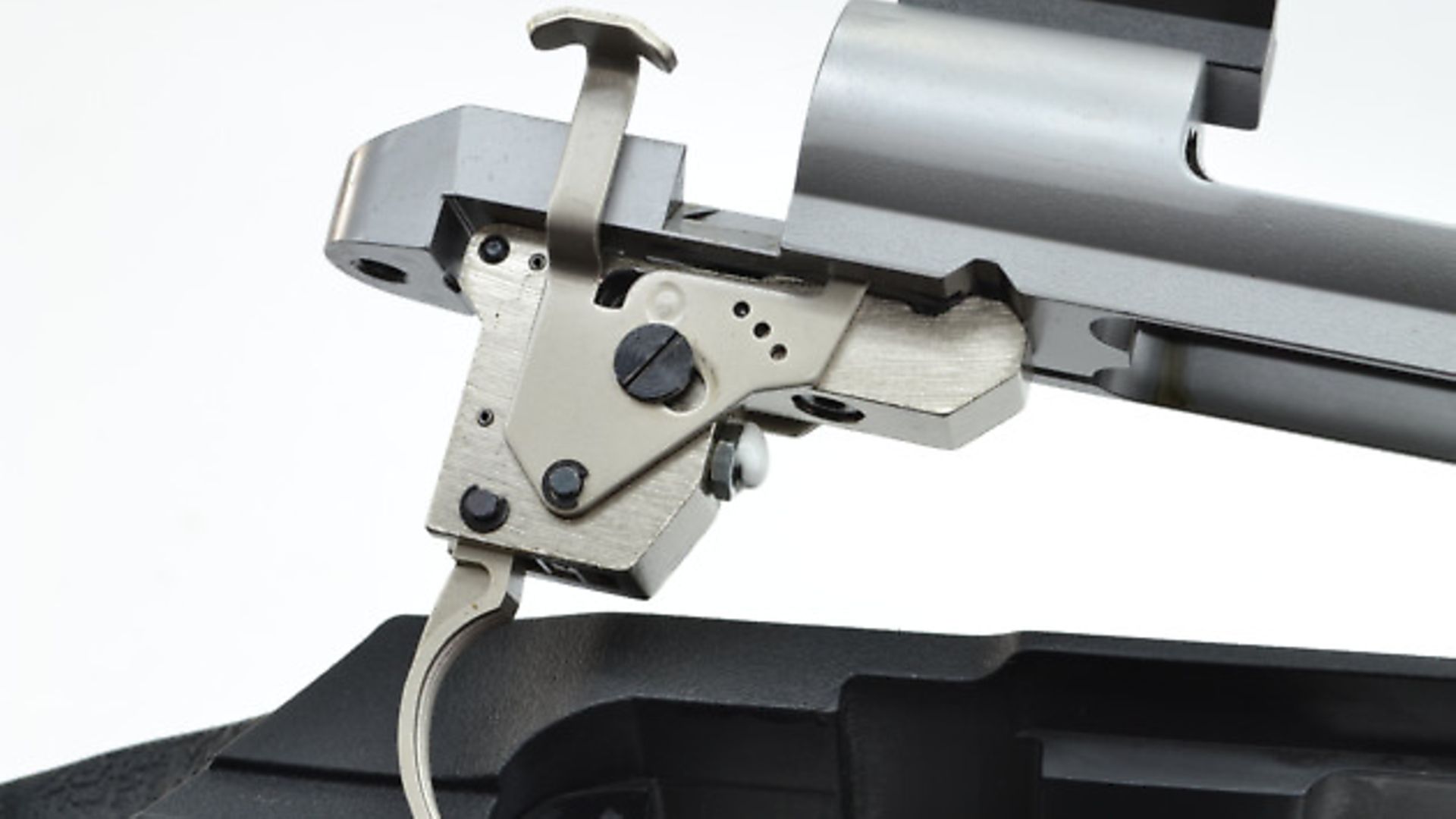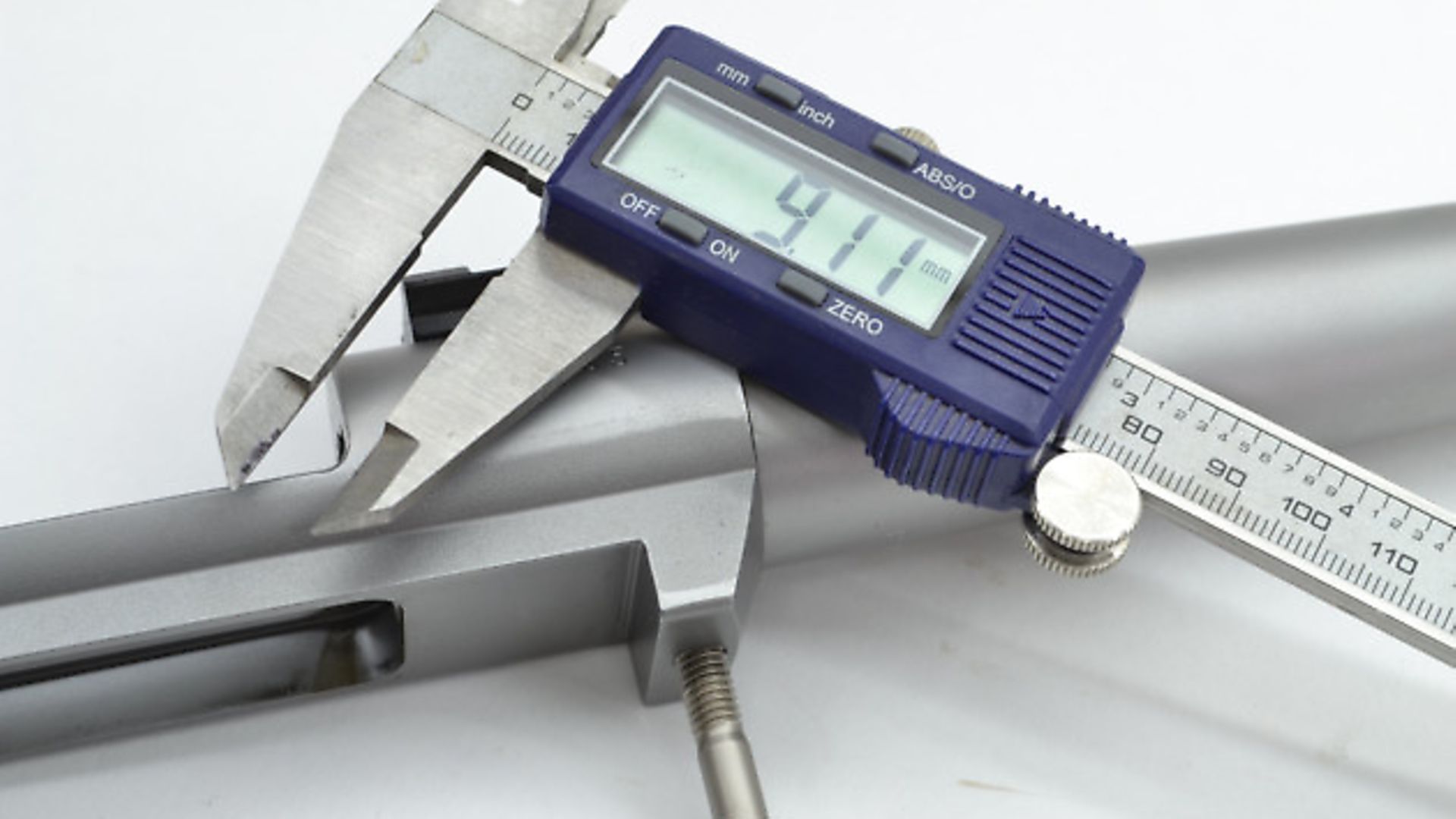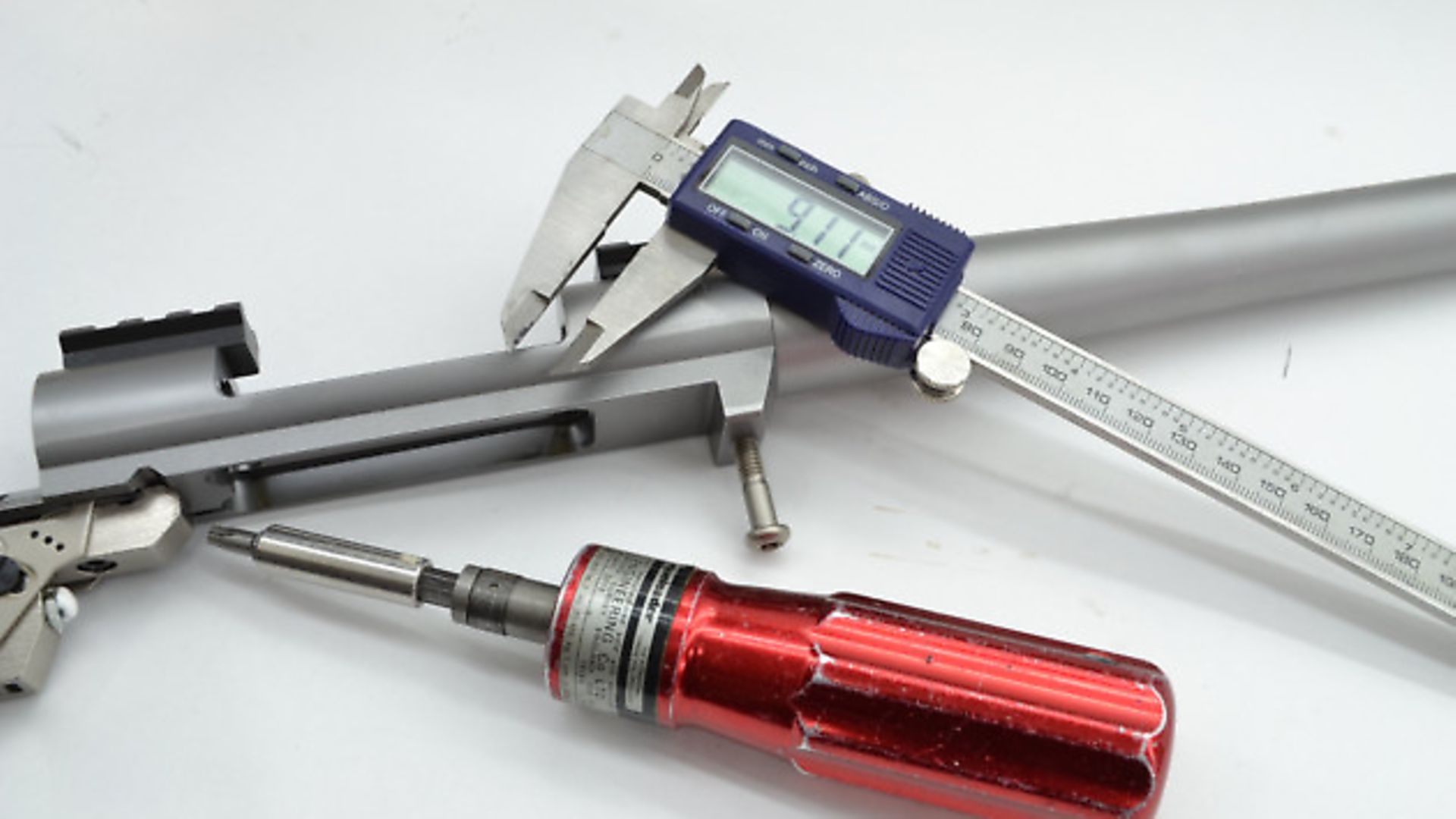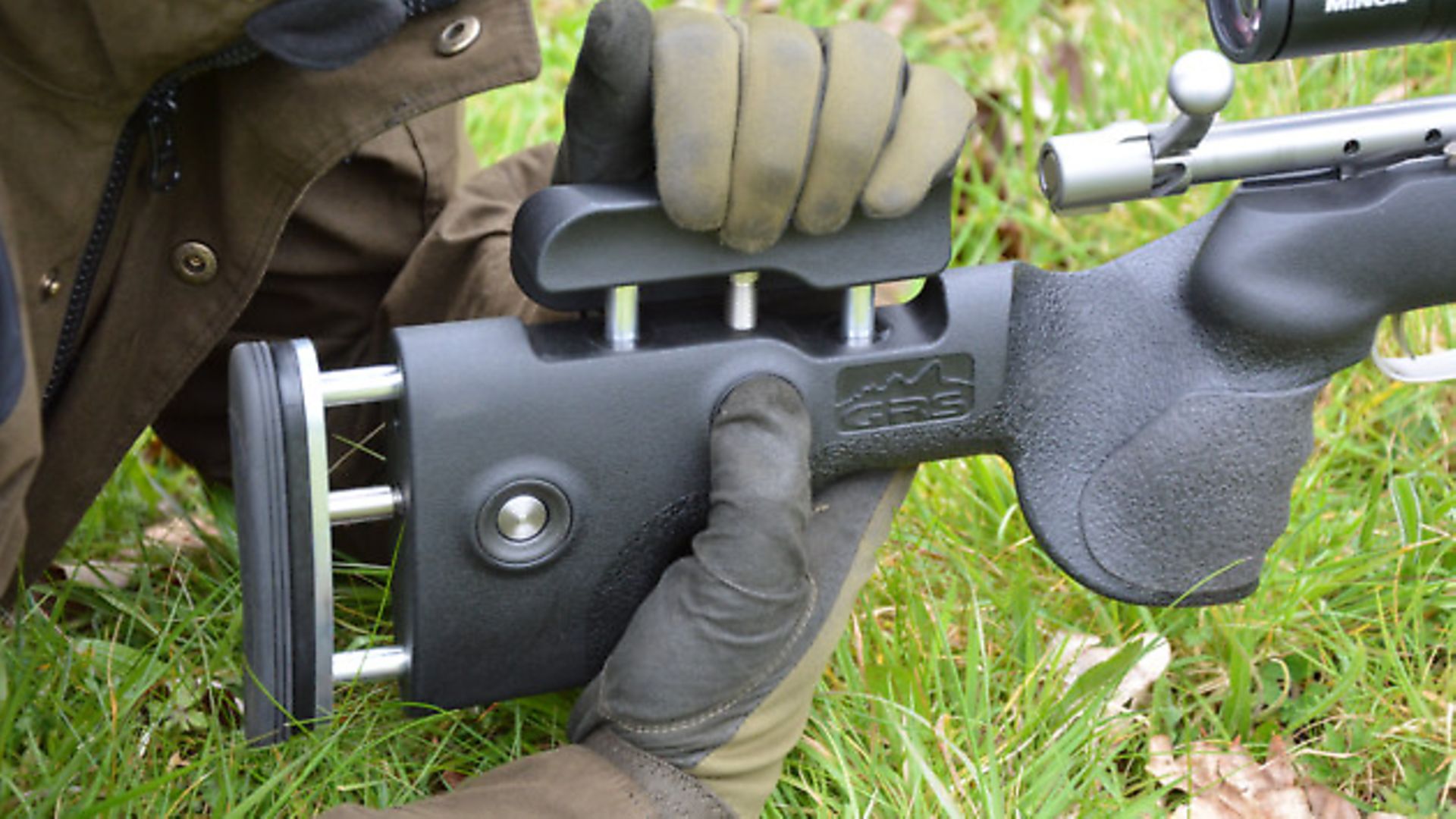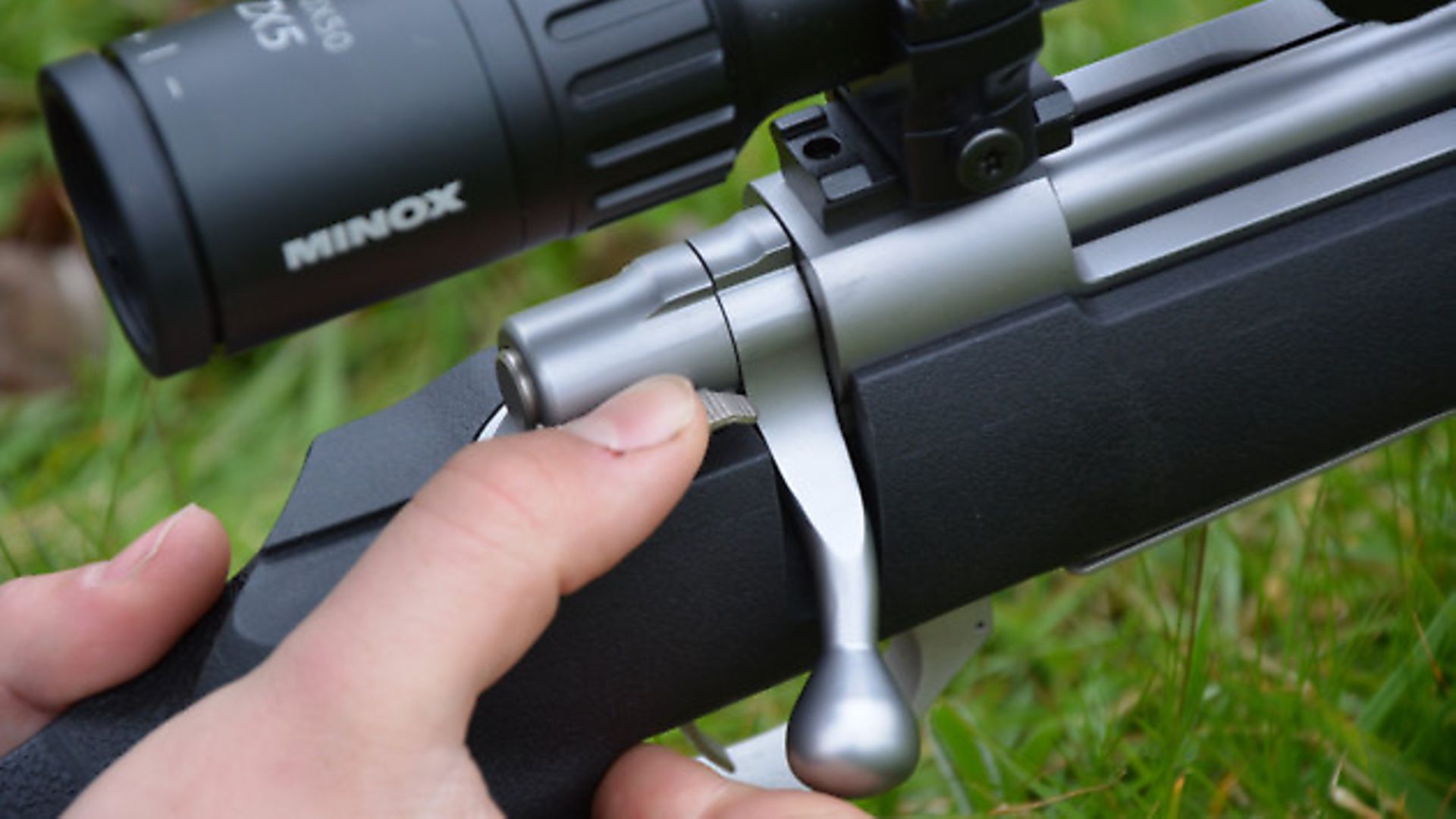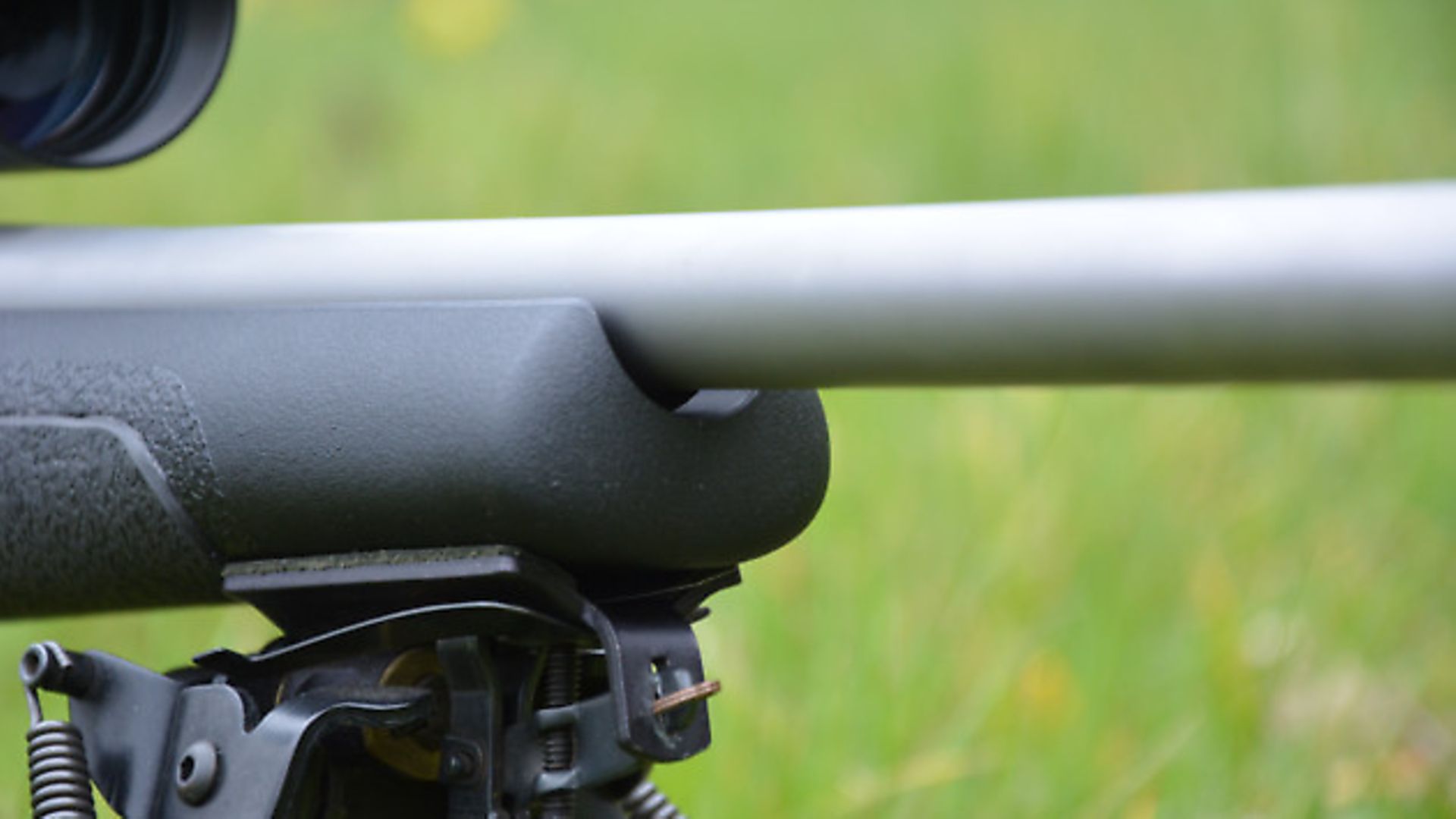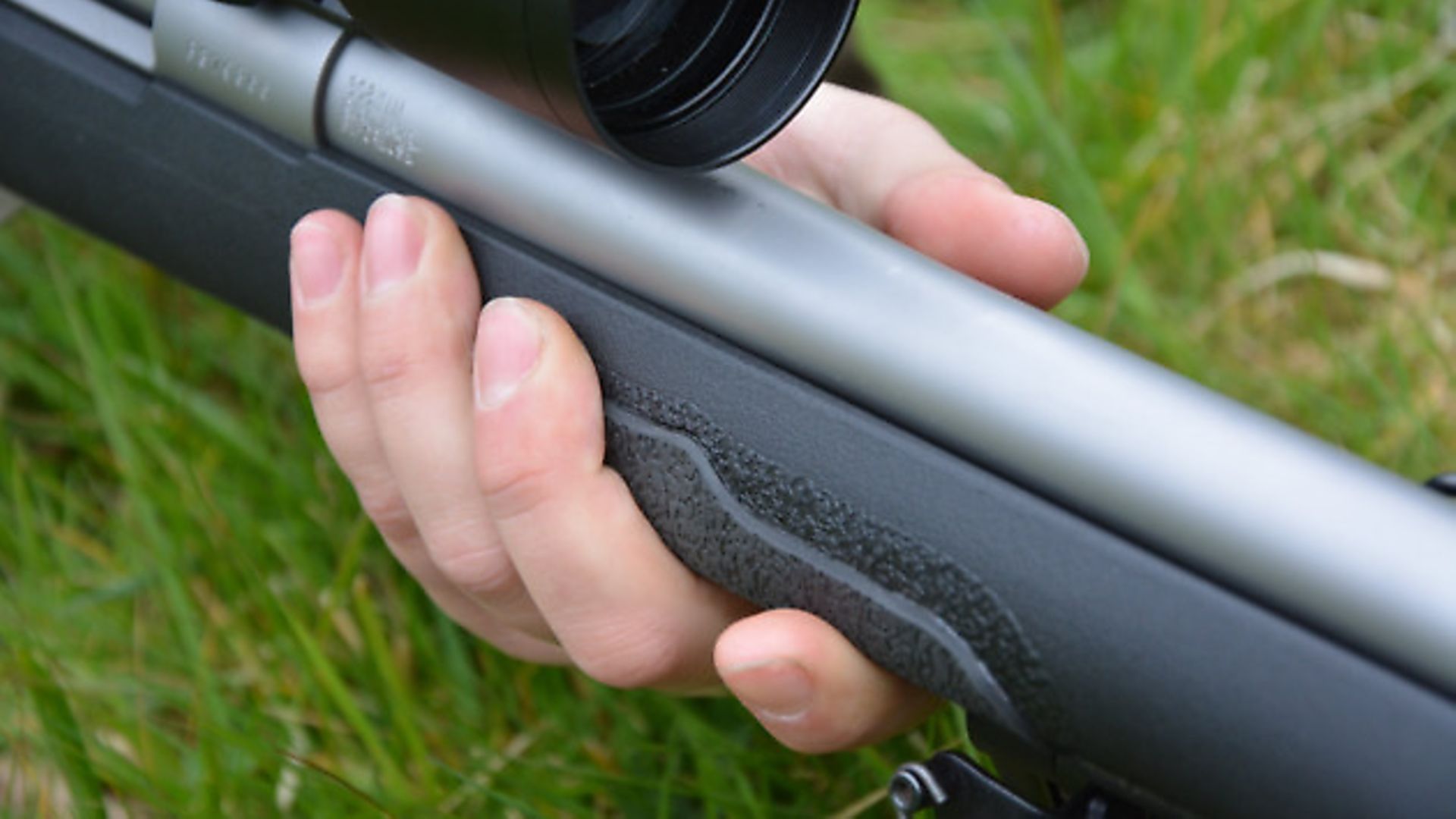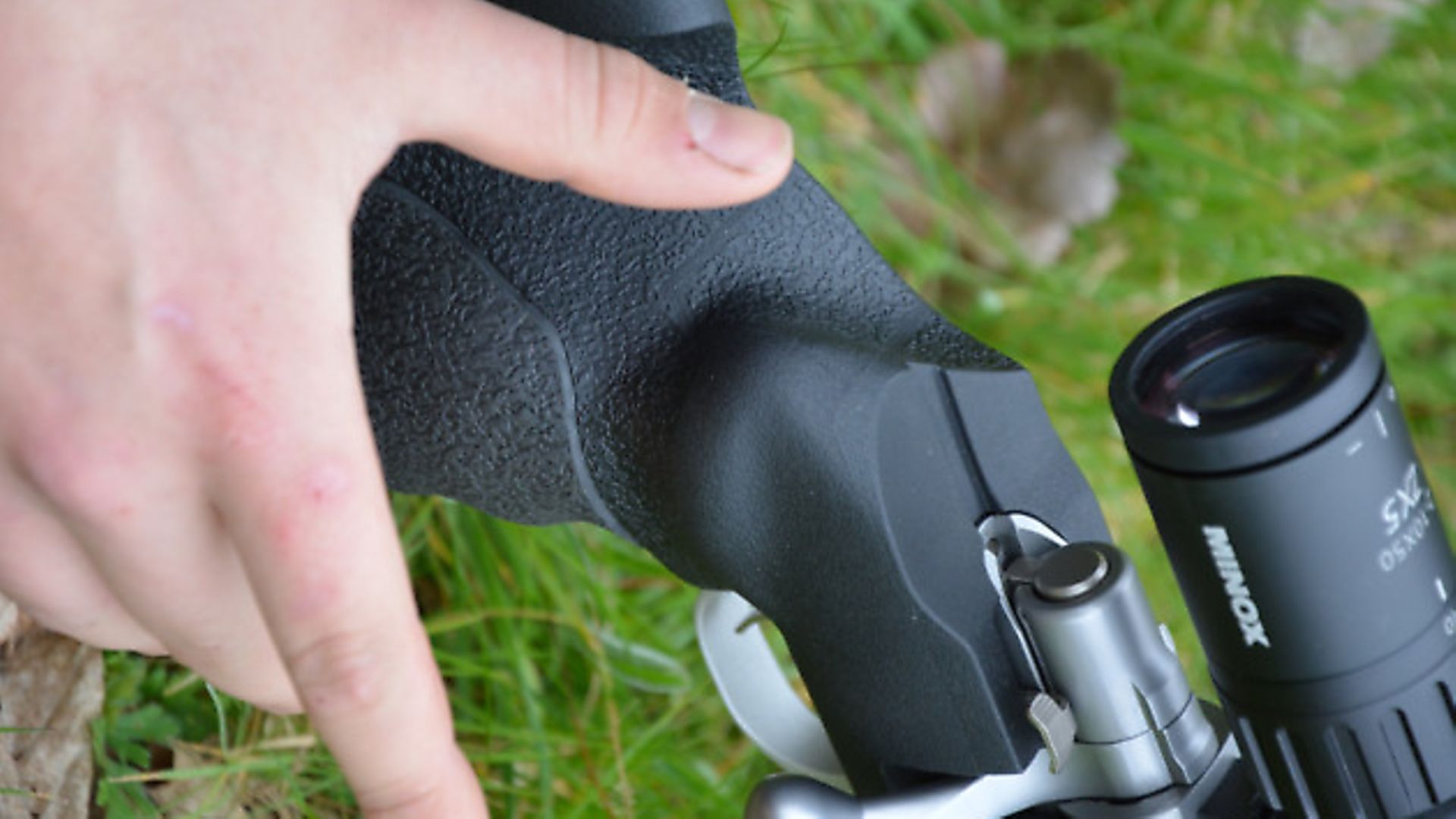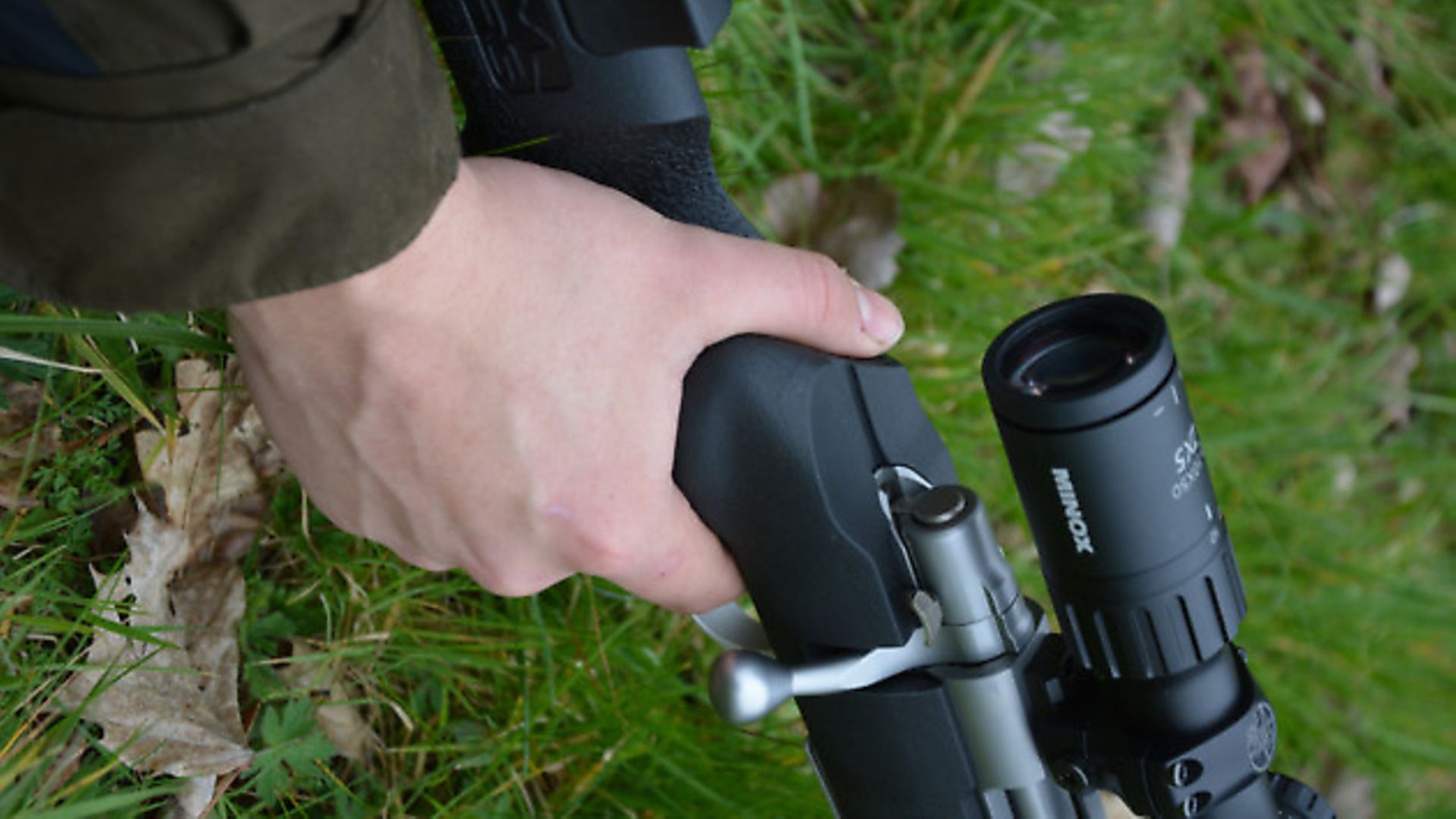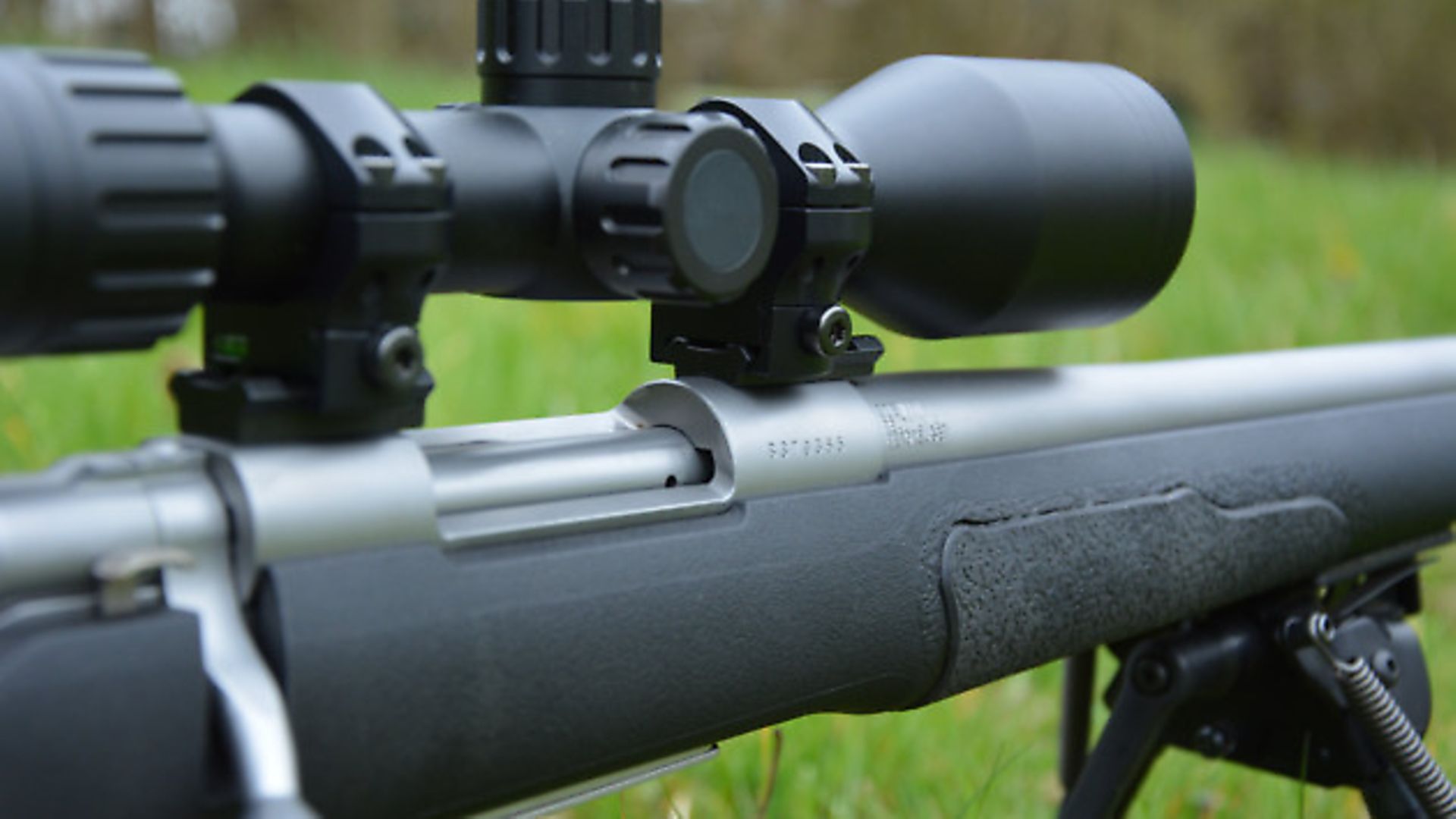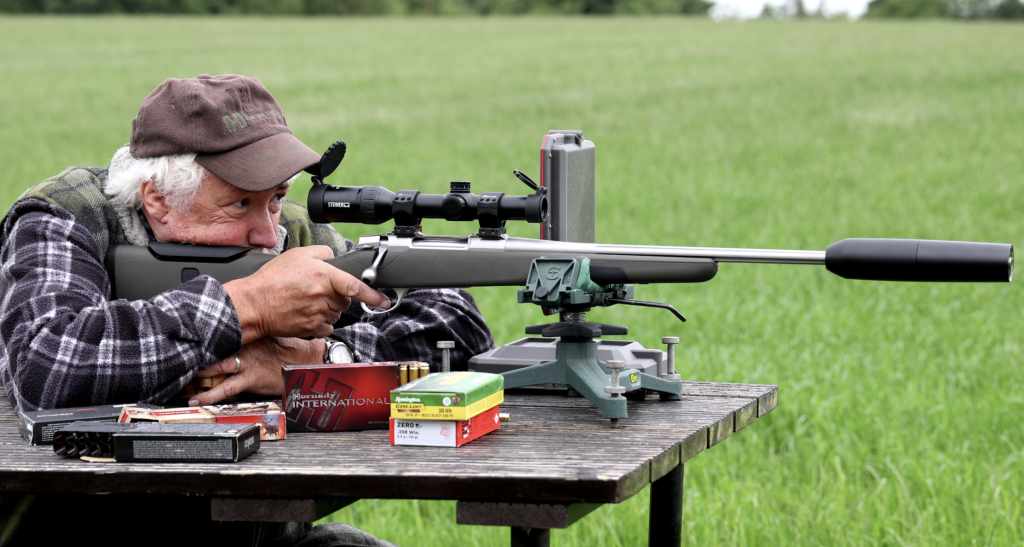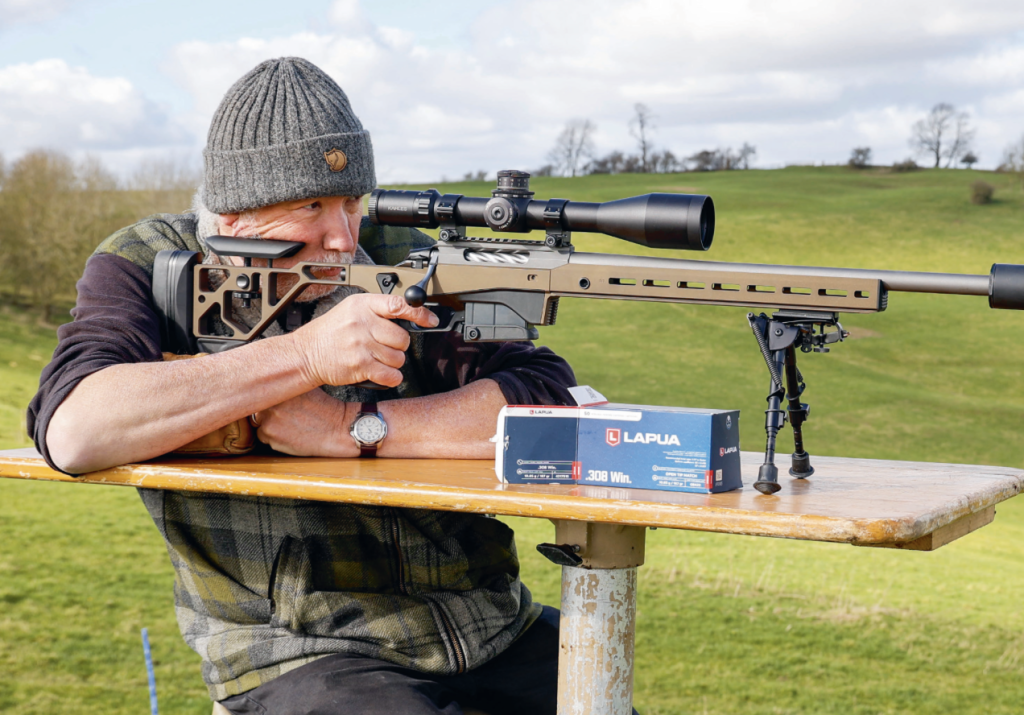Howa heavy barrel .308 Winchester – in depth rifle review
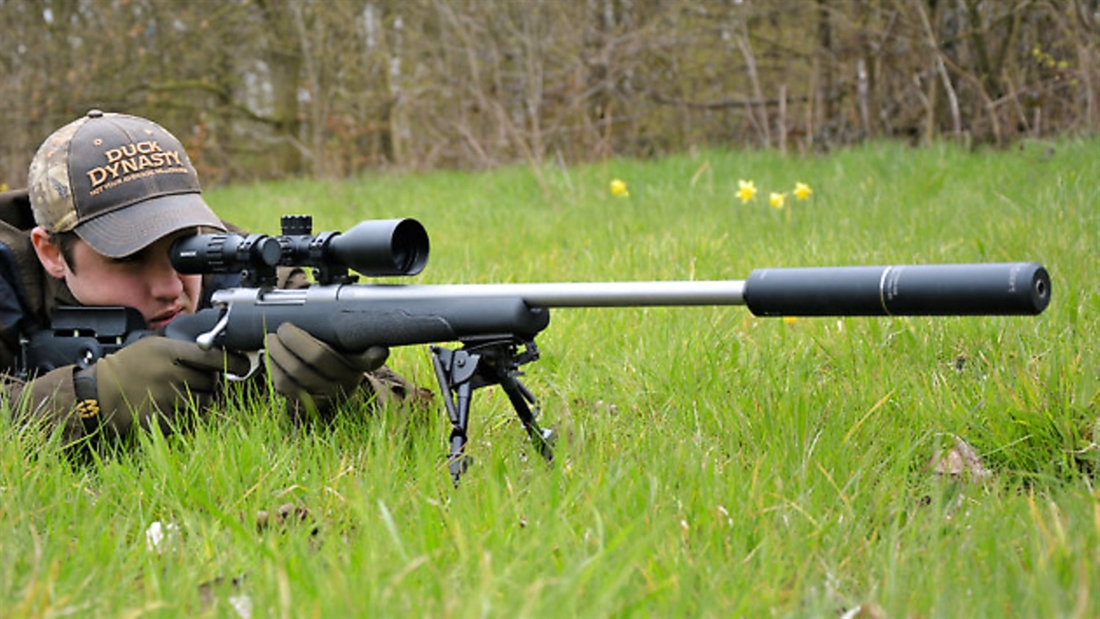
Chris Parkin presents an in depth review of the Howa heavy barrel .308 Winchester rifle
Pros
Fantastic ergonomics for a `tactical` rifle package
Well balanced weight for the specifications with good optional accessory package
Howa triggers are definitely improving
Cons
Action screw tension is critical; I just don’t like the Howa recoil lug/inlet/screw’s design conflict
Opinion
As a factory rifle package this gun has few, if any, equals at this price, and is definitely worthy of experimentation with handloads and additions of the magazine conversion. Experiment with the action screws for best results and keep notes of the applied torque.
Specification
Model Howa Heavy Barrel 308 in GRS Berserk Stock
Calibre 308 Winchester (204 up to 338 available in two action sizes)
Magazine Capacity Five round floorplate (five or 10 round detachable magazine an option)
Barrel, 610mm/24”5/8” UNF (1 in 10” twist rate)
Length 1110mm/43 ½”
Weight 4.6kg
Length of pull 340-366mm/ 20mm cheekpiece adjustment
Trigger pull 1400gr/ 3lbs two-stage with three position safety (non-adjustable)
Contact
Highland Outdoors
0845 099 0252
SRP for rifle, stock, AimZonic Triton 42s Moderator package
£1433.97
Optional Magazine Conversion Kit £52.99
Five or 10 round polymer magazine £79.99
Prvi Partisan 168gr BT match ammunition £75.00 per hundred; Sierra, Ramshot and PPU reloading components also from Henry Krank & Co. www.henrykrank.com 01132 569163
IN DETAIL
I like the fact that you have the ability to build a Howa rifle set-up exactly as you want it to be. Whether it is a sporter in .204 Ruger for vermin control, deer stalking calibre in 7mm-08, or perhaps a .338 for African game – choose your calibre, stock and barrel profile, in either black chrome/moly or stainless steel, and simply bolt it together. As well as modest synthetics, walnut and laminates, Highland Outdoors is now offering the full range of composite stocks from GRS, which includes the latest Berserk injection-moulded polymer unit. The Berserk brings all of GRS’s class-leading ergonomic builds down in price and weight by a couple of hundred pounds and grams; handling the gun becomes a real break from the norm.
As well as push-button adjustable comb and recoil pad/length of pull, the GRS trademark is their canted and offset grip. As well as the tactile finish moulded into the surface of the polymer from end to end, rubberised panels are added at the grip and fore-end, the former of which not only adds warmth and tactility but a palm swell, too. Offset with a ‘thumb-up’ position when prone is a great start when shooting with precision rifles, but the grip here is reminiscent of target pistols – it fits your hand so well that hardly any pressure is needed to retain it securely in your hand through the firing cycle. There is no actual palm shelf, but the palm swell fills your hand so perfectly that the weight of your hand disappears anyway. Better still, to my mind, is that ‘thumb-up’ gives the fastest bolt-cycling position, as extended bolt handles will flick open above your fingertips as your hand lofts from the grip; the Howa’s 70mm-long ball-tipped bolt handle with twin-lug 90-degree lift is in perfect harmony. Adjustable length of pull through a 26mm/1” range allows the soft rubber Limbsaver recoil pad to plant well and control recoil assuredly, without being too squidgy or slipping around in your shoulder. There is an underside butt hook allowing the non-firing hand to both support elevation adjustment, and retain the gun in your shoulder through the recoil and return cycle. Twin side-mounted QR sling studs are fitted, to allow a Biathlon sling to hold what may become a heavy gun flat onto your back, and a regular stud is fitted to the fore-end for bipod mounting. The barrel is fully floated and remains so from all positions. The beavertail fore-end is both tactile and rigid. Yes, this stock is a cracker, and for prone sporting shots its lighter weight, at seemingly no compromise in stability, makes it a great choice for any rifle.
Howa’s heavy stainless barrel is 610mm long with a 5/8” UNF threaded muzzle. It shows a recessed crown within its 21mm/0.83” diameter, and the work is of a high standard, without marks or obvious tool chatter. Highland also supplied an AimZonic Triton 42S (compatible with this and the .30 cal bore) for the test to reduce noise and recoil. Case extraction and ejection are easily handled by the push-feed bolt with claw extractor and plunger ejector between the open-topped action bridges of the superficially cylindrical, but actually flat-bottomed, action. Two pairs of screw holes fasten Remington 700 profiled bases, and the gun arrived with Weaver style fitted, making scope mounting straightforward. A rail is also on offer, which is helpful for the addition of night vision kit. Twin lugs give the bolt a 90-degree lift. Although some may say 60 is better, 90 is generally lighter and causes less gun disruption, which I feel is beneficial on a rifle intended for precision prone – less effort is less likely to upset any rest equipment in use. Plenty of primary extraction force is on offer with even stout factory ammo easily broken free of the chamber walls. The chamber seems accurately head-spaced; no issues were found when re-using fired cases. The gun will load from the five-shot floorplate magazine or, depending on calibre (small .223 based cases will tend to be fiddlier), from single rounds dropped into the magazine well. A catch is sited on the front of the trigger guard to drop spare ammo free from the bottom of the gun, although it did need a firm tap to make sure it fully re-engaged when clicked back up. The bolt is well finished, matt in surface preparation and all steel. There is no specific cocked action indicator at the bottom of the shroud, but the rear of the firing is tactile, and obviously recessed when fired. A bolt-removal button sits to the left of the rear action tang.
For my hands, the reach to the 7mm-wide, vertically-ribbed trigger blade was perfect, so it sat very comfortably with the vertical grip of the rifle. It’s a two-stage trigger, so the first 5mm or so of travel are light until you come up against the second stage, which is crisp and breaks at a predictable and consistent 1400g/3lbs. The bolt locks when the right-side thumb safety is pulled fully rearward. ‘Safe’ with bolt operation is enabled on the centre detent. Fully forward allows the rifle to fire, but the centre position is a bit easy to skip over, so you really need to ‘feel’ for it. The trigger is blocked by the safety and, although it could technically be adjusted, the screws are encapsulated by a large white blob of sealant to discourage any tampering. This is a fairly good trigger for the price and one of the few two-stage units around on a factory centrefire (although they are very familiar to the air rifle and military worlds). It is a definite improvement over Howa triggers of old and felt a lot better than one I used a couple of years ago too, so perhaps factory tolerances have improved or settings have been more carefully adjusted when setting them up.
With a one in 10” twist rate and 24” length, the barrel is well specified for a .308 gun more suited to target and longer range performance. That length of tube will generate plenty of velocity and, more importantly, you can really shoot any weight of .30 cal bullet from it with ample stability, even over 200gr (by which time the case capacity will really be starting to limit powder volume to get the best from anything). I like 150gr for general use in .308, with 175/180s for longer range shooting, but I consider anything beyond about 800 yards to be stretching a .308 for its best performance, unless it has a long (26”) barrel. The flip side is that a .308 shows good barrel life, modesty with reloading/ammunition costs, and shows better bullet trace through the air compared to its more ‘slippery’ competitors. This is kind of a catch 22; it’s harder to shoot a ‘plain Jane’ .308 ‘through’ the wind, but you will learn more while experimenting, and it all adds to the fun. I started out zeroing the rifle with 168gr PPU match ammunition, but found the gun was struggling to print better than a two-inch group at 100 yards, until I remembered an issue with my own personal Howa from eight or nine years back – action screw tension was a concern.
Although flat bottomed, the Howa has a recoil lug machined as part of the action, which is great, but the front action screw threads into that lug and not into the action base itself. Now, the lug projects 9.11mm from the action’s base, yet the stock’s lug pocket is over 10mm deep (I have found this on all Howas). So, when you carefully torque your action screws to, say, 65lbs/in or 7.4Nm, the action and stock are placed under stress and will effectively bend to close the 1mm gap, rather than coming to a hard stop (as it will when the action screw enters the bottom of the action directly). I don’t really like this aspect of the Howa’s design, as elsewhere all other manufacturing tolerances are similar to what can be expected with their own inherent limitations. I had my gun synthetically bedded to minimise the problem, and it helped massively, but it is worth spending time having a play with the applied torque and doing your very best to retain it if the gun and stock are parted, because you will lose zero. This stress is easiest to detect when you slacken off just the front action screw and watch the barrel rise (or preferably not) from the fore-end channel of the rifle. Some may disagree with me here, but I know what works for me and, yet again, this path yielded results. I wasn’t surprised to find the gun delivered with the front screw actually slightly loose.
Anyway, with a bit of playing around done, the performance improved rapidly with the 168 and 150gr softpoint PPU, but I quickly moved over to hand-loaded ammunition (of known ‘average’ recipes) to find the gun improved yet again, and showed a particular liking for my Sierra 175 Matchking load using Ramshot TAC in PPU brass. This held five shots within one MOA at 100 yards, and performed as well as I could hope of myself on my usual tennis ball test at 400 yards. I shot the gun mainly bench-rested, which isn’t my favourite position, yet it is important to note the recoil character of the gun; from an un-softened rest on a concrete bench it was very linear with none of the expected bounce. I was using a 6-9” Harris bipod and, with the moderator or without, you felt the pressure wave from the gun’s recoil directed very centrally into your shoulder pocket. I normally use a rubber mat in such situations, but with a hard or soft hold the GRS stock really impressed in that respect. Shooting prone was equally pleasant on the range, but my preferred surface is always grass, anyway; it really calms all the recoil and noise from any gun. Adjusting length of pull and cheekpiece height on the Berserk stock really allowed me to experiment with recoil control and with assessing the movement in the aim point of the scope, after each round was fired. I think this stock really makes the rifle shine. Internally it shows good rigidity, and the action inlet itself has harder portions inserted at main bearing points, as well as metal pillars to surround the action screws. Still, it is sad to see this effort essentially wasted; the front at least has fresh air between the stock and recoil lug, so there is hardly much point having an incompressible pillar. I don’t think anyone wants a recoil lug in hard contact with the base of its recess, but with the Howa action you are in a bit of a catch-22 situation. I always check this anyway, but the Torx heads on the action screws were actually loose on delivery, and not everyone will have access to this tool. I have spoken to several gunsmiths about stock inlets and bedding of rifles. It is always engineered into the design of any gun and stock, some better than others. The general suggestion – which most will agree on regardless of tolerances, hand synthetic bedding jobs or design – is that the bottom of the lug shouldn’t touch the base of its pocket. With the Howa, you have no choice, and I was warned many years ago that, when slackened off, any barrel that rose out of the channel by more than 0.001” or so when the front screw was slackened was likely to be a problem. Here, sadly, that held true, and not everyone has a torque wrench to apply their hard-earned settings after any maintenance. I tried it with the Howa and, even with my high-quality Wiha wrench, I couldn’t get closer than a 2” return to zero.
Magazine feed is one area in which Howa has put some real money into development and, unlike the countless cloned floorplates that use Accuracy International AICS magazines and near mandatory re-inletting, Howa has developed a more compact magazine in five- and 10-shot capacity that fits within a floorplate design. This is minimal enough to slot straight into the factory floorplate’s recess, and I would, without hesitation, see this fact alone as one that swings things back in Howa’s favour. My personal dislike of the recoil lug/screw design aside, with some care the Howa shot well in the end, and is a great price for such a complete package. I really liked the stock, and I think we are seeing the future; serious design and manufacturing quality from GRS will make other synthetic designers wake up to the rigidity on offer, which, in this case, made a solid platform upon which to tweak the ‘parent’ rifle.
Related Articles
Get the latest news delivered direct to your door
Subscribe to Rifle Shooter
Elevate your shooting experience with a subscription to Rifle Shooter magazine, the UK’s premier publication for dedicated rifle enthusiasts.
Whether you’re a seasoned shot or new to the sport, Rifle Shooter delivers expert insights, in-depth gear reviews and invaluable techniques to enhance your skills. Each bi-monthly issue brings you the latest in deer stalking, foxing, long-range shooting, and international hunting adventures, all crafted by leading experts from Britain and around the world.
By subscribing, you’ll not only save on the retail price but also gain exclusive access to £2 million Public Liability Insurance, covering recreational and professional use of shotguns, rifles, and airguns.
Don’t miss out on the opportunity to join a community of passionate shooters and stay at the forefront of rifle technology and technique.



